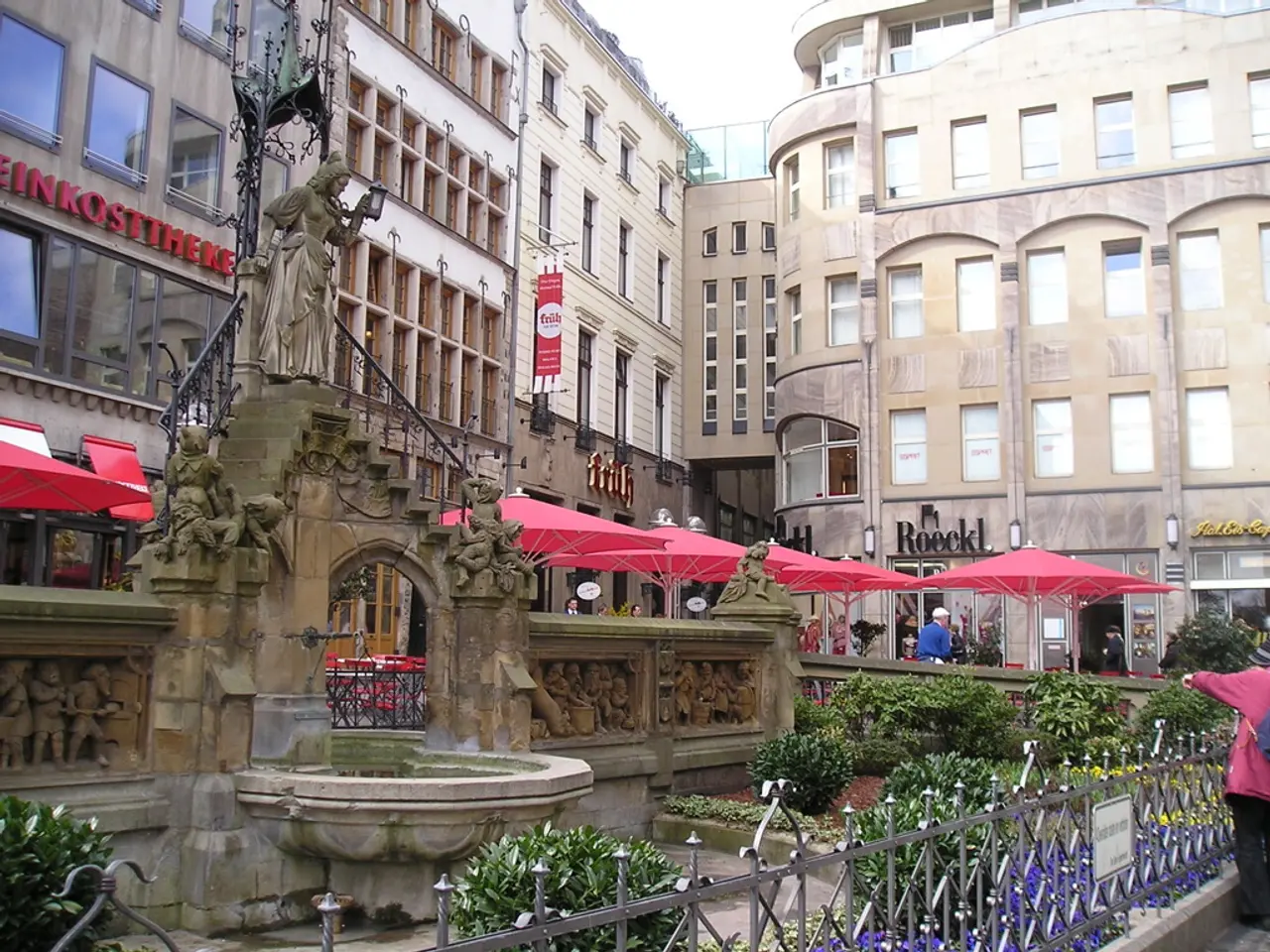spectacular sky-high green space in New York, engineered by prominent landscape architects boasts an impressive plant collection
Little Island, an artificial park island located on the Hudson River in New York, is a testament to the power of horticulture and urban landscape architecture. This unique green space, designed by Heatherwick Studio, rises from the river on 132 tulip-shaped, precast concrete structures, once the main port for the Cunard White Star Line in the early 20th century.
The park's innovative landscape design, a key feature since its opening in 2021, was masterminded by Signe Nielsen, the principal founder of MNLA. Nielsen's planting scheme, designed to create a unified feel across the park's four quadrants, is a showcase of biodiversity and seasonal transformation.
Each quadrant boasts its own distinct color palette, with cool, pastel colors in spring giving way to more intense hues in summer, and muted tones in autumn. In the southeast quadrant, Nielsen created the Moon Garden, filled with only white plants, providing a serene contrast to the rest of the park.
Across the park, Nielsen used over 60 species of bulbs, 80 species of shrubs, 249 species of perennials, 80 species of grasses, and 42 species of trees. The park's soil, imported engineered sandy loam with more geo-fibre added in for stability on the slopes, supports this diverse planting scheme.
The park's maintenance team, led by Orrin Sheehan, have a seasonal routine that begins with early cutbacks in January and continues with lawn care and plant maintenance in the warmer months. During the height of the Covid pandemic, Sheehan and his team planted up to 5,000 plants a week.
Interacting with visitors who flock to the park to learn about the planting is an enjoyable aspect of the work for Orrin and his team. Find more information about Signe Nielsen's work at mnlandscape.com and about the park at littleisland.org.
Little Island's design is more than just a pretty face. It integrates horticultural variety layered around winding pathways, terraces, and gathering spaces, aiming to create an immersive green experience within the urban environment. The amphitheater and other functional areas are seamlessly integrated within this planting framework, balancing ecological and recreational functions.
The Southwest Overlook, affectionately known as 'Signe's mountain', is the highest point in the park, offering stunning views over the Hudson River. On the Northwest Overlook, Nielsen has used hot colors such as rich-red Crocosmia 'Lucifer' and bright-orange Helenium autumnale 'Adios'.
The park occupies the space left by three of the old Chelsea Piers, one of which was the departure point for the RMS Titanic. Today, Little Island stands as a living testament to the power of nature and design to transform even the most urban of spaces into a vibrant, thriving oasis. The park is open daily, from 6am to 11pm, inviting all to come and experience its ever-changing beauty.
- The innovative landscape design of Little Island, a park located on the Hudson River in New York, showcases a diverse range of plants, including over 60 species of bulbs, 80 species of shrubs, 249 species of perennials, 80 species of grasses, and 42 species of trees.
- Signe Nielsen, the principal founder of MNLA, masterminded the park's planting scheme, which is designed to create a unified feel across the park's four quadrants, transforming the urban landscape into a vibrant oasis.
- Each quadrant of Little Island presents its own distinct color palette, with the Moon Garden in the southeast quadrant, filled with only white plants, providing a serene contrast to the rest of the park.
- Little Island's design integrates horticulture layered around winding pathways, terraces, and gathering spaces, immersing visitors in a green experience while balancing ecological and recreational functions. This artificial park island stands as a testament to the power of nature and design to transform urban spaces.




